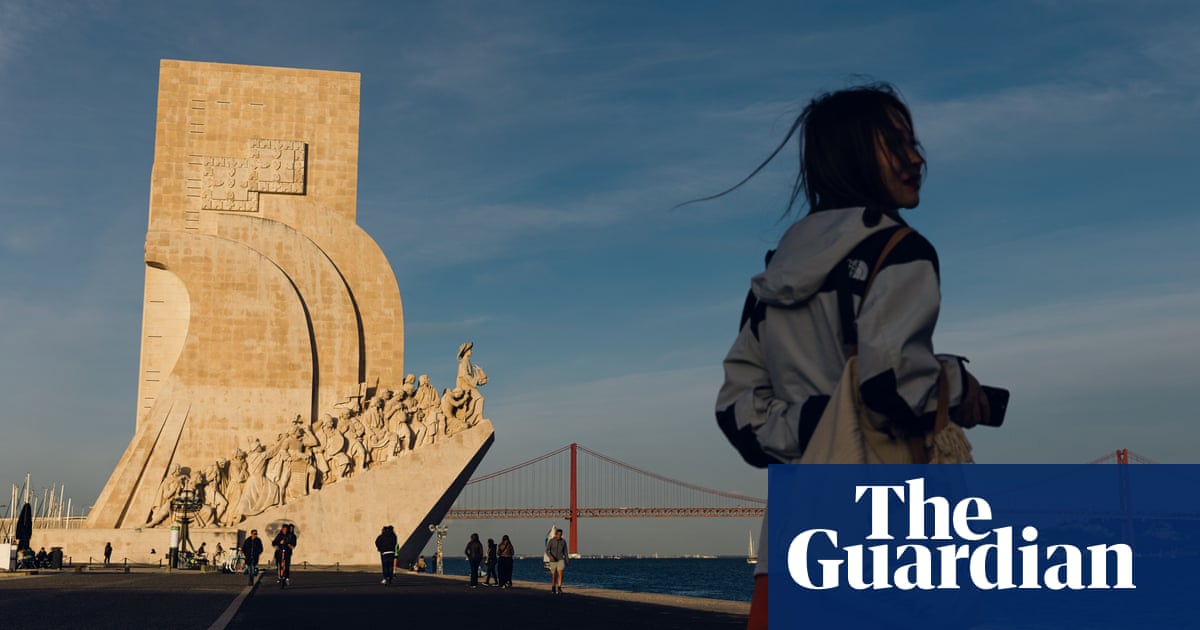Its thousands of images hail from around the world, capturing an empire that spanned from Angola to Cape Verde and beyond. For historian Filipa Vicente, however, 10 years of combing through the colonial archive at the University of Lisbon proved deeply unsettling; revealing people who were often nameless and were probably photographed without consent.
“These are violent visual archives,” said Vicente, a researcher at the university. So last year she began dreaming up a response, inviting Portuguese families of African descent to rummage through their drawers and phones to put together their own photo archive.
“For me, it was a need to create a counter-narrative,” said Vicente. “Colonial photography so often is a way of dehumanisation. So I really felt the need to see how photography can be used as a way of self-representation, self-expression, of humanising people.”
The result was a collaborative exhibition, on display in Lisbon until the end of November, that teases out the personal stories of a collective history, all while offering up an alternative to the images of one of Europe’s longest-lived colonial empires.
Delving into intimate moments that range from pregnancies to wedding parties, each of the photographs in the exhibition were chosen by the families, said Inocência Mata, a professor of literature at the University of Lisbon who co-curated the exhibit with Vicente. “And that’s very important to us, to show that Black people are not only objects, that they are also subjects of their history.”
The family photos mostly date back as far as 1975 and reflect the experiences of 35 families who were part of a wave of migration from the country’s former colonies. The family albums are contextualised by photos that reveal the centuries-long history of the city’s African community, which swelled as Portugal launched the transatlantic slave trade in the 15th century.
As word of the project spread last year, Chalo Correia knew he had to be part of it. Originally from Angola, Correia’s more than three decades of living in Portugal had laid bare a subtle racism that left him feeling like he would never fully belong.
He saw the exhibit as a way to highlight Lisbon’s large and diverse community of African origin – a community deeply rooted in Portuguese history but still seen by many as outsiders. “The photographs seemed a way of making visible what had long been invisible,” he said.
Correia, a musician and artist, selected three photos that showed him sitting with two friends on a terrace, a baptism and a family party. Months later, as he wandered through the exhibition’s dozens of family photos, he was overcome with emotion.
“I was in tears,” he said. “I felt I understood everyone who was in those photos, even if I didn’t know them.”
While the stories are personal, the footprint of Portugal’s empire threads through much of the exhibit, said Vicente. “We had such a late colonialism, such an abnormal and absurd colonialism until 1975,” she added. “And so these stories are very much present in our daily lives.”
It’s an echo, in some ways, of a city where monuments and street names continue to reflect the country’s colonial period. “We talk a lot about the legacies of colonialism and Lisbon is full of them,” she said. “But there’s also another aspect of the Portuguese colonial history, which is the existence of this big and important community of African descent.”
The exhibition winds through the small rooms within the Padrāo dos Descobrimentos, or monument to the discoveries; the hulking stone and cement structure that was conceived as a means of glorifying and celebrating Portugal’s empire.
The location of the exhibition proved controversial, leading some families to decline to participate, said Vicente. She and Mata, however, saw the opportunity to launch a sort of “Trojan horse”, with the exhibition offering a chance to reinterpret one of the city’s many colonial spaces from within.
“For us, it’s a way of saying: ‘Yes, this is a historical monument that has this specific story,’” said Vicente. “Inside we are resignifying the meaning of the monument itself by organising this exhibition.”
The exhibition comes as Portugal wrestles with the broader question of how best to address its colonial and slave-trading past. Earlier this year, the country’s president, Marcelo Rebelo de Sousa, told reporters that Portugal should “pay the costs” for slavery and other colonial-era crimes, a suggestion that was swiftly shot down by the country’s new centre-right coalition government.
For Mata, the exhibition’s efforts to shed light on the present-day reality of Portugal’s community of African descent was a potent means of grappling with the past. “These so-called reparations – this is also way of doing it,” she said.
“Black people have been part of the construction, they’ve been building this country,” she added. “And is it time that they have their voice.”
